Did you know that approximately 75% of animals and plants in Angola are at risk of extinction? The loss and degradation of habitats, combined with illegal activities and human pressure, pose significant threats to the country’s unique blend of sacred natural sites and vibrant biodiversity. In this article, we will explore the challenges facing Angola’s conservation efforts, the importance of sacred natural sites, and the ongoing initiatives to protect and preserve this precious natural heritage.
Key Takeaways:
- Angola’s biodiversity is facing serious threats due to habitat loss, illegal activities, and human pressure.
- Sacred natural sites play a vital role in protecting and conserving Angola’s biodiversity.
- The government and local communities are working together to implement conservation measures and preserve the country’s unique natural heritage.
- Efforts are being made to recover national parks, establish protected areas, and involve communities in conservation initiatives.
- Further support and investment are needed to ensure the long-term sustainability of Angola’s sacred natural sites and biodiversity.
Angola’s Rich Biodiversity
Angola boasts some of the most remarkable biodiversity in Africa. The country’s diverse climate and ecological variability contribute to the formation of distinct bioclimatic zones, ranging from dense tropical forests to arid desert regions devoid of vegetation. These varied habitats provide a haven for a vast array of plant and animal species, resulting in a high level of biological diversity throughout Angola.
“Angola’s biological diversity is truly awe-inspiring, with each region offering its own unique ecosystem and species. From the lush rainforests teeming with life to the barren savannas with their hardy survivors, Angola is a treasure trove of biodiversity waiting to be explored.” – Dr. Elizabeth Mbaku, Conservation Biologist
However, the preservation of this rich biodiversity is under threat due to the loss and degradation of habitats, primarily caused by human activities. Human pressure, such as urbanization, deforestation, and unsustainable agricultural practices, poses a significant risk to Angola’s delicate ecosystems.
Approximately 75% of animals and plants in Angola are identified as vulnerable, endangered, critically endangered, or have no available data due to these environmental challenges. Such a high proportion of threatened species highlights the urgent need for conservation efforts to protect Angola’s biodiversity.
The Diverse Habitats of Angola
Angola is home to an assortment of distinct habitats that support a wide range of flora and fauna. Let’s explore some of the prominent bioclimatic zones present in the country:
- The dense tropical forests of northern Angola are a haven for an incredible array of plant species, including rare orchids and towering mahogany trees.
- In the central region, you’ll find lakes and wetlands teeming with aquatic life, providing vital habitat for migratory birds and numerous fish species.
- The vast savannas that stretch across much of the southern and eastern parts of Angola host a remarkable variety of large mammals, such as elephants, lions, zebras, and antelope.
- In stark contrast, the arid desert areas in the south are home to unique plant and animal adaptations that have evolved to survive in extreme conditions.
Image: Angola’s diverse ecosystems support a rich variety of plant and animal life.
Protecting these diverse habitats is essential for safeguarding Angola’s biodiversity. By preserving the intricate web of life that exists within each ecosystem, we can ensure the continued survival of countless species and maintain the delicate balance of nature.
| Biodiversity in Angola |
Angola Sacred Sites |
Sacred Landmarks Angola |
| Angola has a rich biological diversity, offering a habitat for numerous species. |
Angola is home to sacred natural sites that hold cultural and ecological significance. |
Sacred landmarks in Angola are important areas for the protection of biodiversity. |
| The loss and degradation of habitats threaten Angola’s biodiversity. |
Preserving sacred sites is crucial for the conservation of Angola’s biodiversity. |
Protecting sacred landmarks contributes to the overall biodiversity preservation in Angola. |
Threats to Angola’s Biodiversity
Angola’s biodiversity faces numerous threats, primarily driven by human activities. The major threats include the loss and degradation of habitats, illegal forestry activities, charcoal and firewood consumption, and the pressure on wetland areas. These threats put several species at risk, including migratory birds and other species dependent on specific habitats. The fragmentation of forests, urbanization, and the expansion of cities also contribute to the degradation of the environment and the loss of biodiversity.
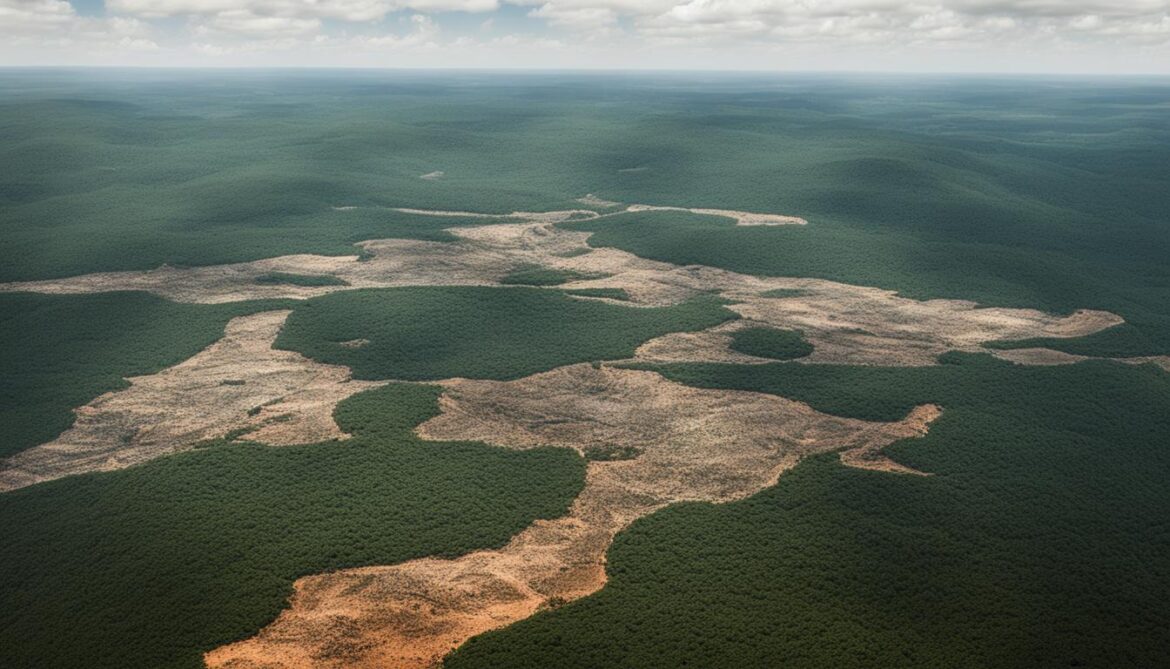
Human activities pose significant challenges to Angola’s conservation efforts and environmental protection. The loss and degradation of natural habitats are major concerns that directly impact the country’s biodiversity. The destruction of forests and wetlands disrupts ecosystems, displaces animal populations, and threatens the survival of numerous species.
“The loss of habitats not only affects individual species but also disrupts ecological balance, impacting the entire ecosystem. It is vital to address these threats and safeguard Angola’s biodiversity for the well-being of future generations.”
Illegal forestry activities further exacerbate the destruction of forests, leading to extensive deforestation and habitat loss. The extraction of resources without proper regulation and oversight directly harms Angola’s wildlife preservation efforts and hinders conservation initiatives.
Charcoal and firewood consumption also contribute to the degradation of habitats, as these practices often involve unsustainable logging. The increased demand for fuelwood and charcoal for domestic purposes puts additional pressure on already vulnerable ecosystems and threatens the long-term viability of Angola’s flora and fauna.
Furthermore, the pressure on wetland areas, such as estuaries and lagoons, is a significant concern. Wetlands are essential habitats for various species, serving as feeding grounds, breeding sites, and migration stopovers for numerous bird species. However, urbanization, agricultural activities, and pollution pose severe threats to these fragile ecosystems and the wildlife they support.
In addition to the loss and degradation of habitats, the fragmentation of forests due to infrastructure development and the expansion of cities further contribute to the loss of biodiversity. Fragmented habitats disrupt ecological connectivity, making it difficult for species to move freely and potentially leading to isolated populations and a decline in genetic diversity.
Biodiversity at Risk: Species in Peril
Angola’s unique habitats support a wide range of species, many of which are now threatened due to the aforementioned threats. Migratory birds, which rely on specific stopover sites and wintering grounds, face increased risks due to habitat loss and degradation. These birds play vital roles in pollination, seed dispersal, and insect control, making their conservation crucial for maintaining ecosystem balance.
The loss of habitats also places endemic species at risk. Endemic species, found exclusively in specific regions, are particularly vulnerable to habitat destruction and fragmentation. Angola’s unique fauna and flora include several endemic species that require urgent conservation efforts to prevent their extinction.
| Threats to Angola’s Biodiversity |
Potential Impact |
| Loss and degradation of habitats |
Disruption of ecosystems, displacement of wildlife, and extinction of species |
| Illegal forestry activities |
Deforestation, habitat loss, and disruption of ecological balance |
| Charcoal and firewood consumption |
Unsustainable logging, destruction of habitats, and threat to flora and fauna |
| Pressure on wetland areas |
Destruction of fragile ecosystems and loss of breeding and feeding grounds for various species |
| Fragmentation of forests |
Disruption of ecological connectivity and isolation of populations |
The conservation of Angola’s biodiversity is vital for ecosystem resilience, environmental sustainability, and the preservation of unique species. Efforts in conservation, environmental protection, and wildlife preservation are necessary to mitigate the threats posed by human activities and ensure the long-term survival of Angola’s diverse and precious natural heritage.
Conservation Efforts in Angola
Angola is committed to addressing the challenges facing its biodiversity through dedicated conservation efforts. The government has undertaken various initiatives to protect and preserve the country’s unique wildlife and ecosystems. These efforts encompass the recovery of national parks that were significantly impacted by the war, with a focus on infrastructure renovation, animal resettlement, and training programs for park managers and guards.
The government has also established conservation areas, covering 6.6% of Angola’s surface area, to protect and sustain important ecosystems. These areas serve as havens for a diverse range of flora and fauna, contributing to the preservation of Angola’s rich biodiversity. The conservation efforts have yielded positive outcomes, including the notable increase in population of certain species such as the Angolan springbok and African elephant.
Angola’s commitment to conservation goes hand in hand with promoting ecotourism. By showcasing the country’s unique wildlife and natural beauty, Angola aims to raise awareness among both locals and tourists about the importance of preserving and safeguarding its natural resources. Ecotourism not only generates income for local communities but also incentivizes the sustainable management of biodiversity-rich areas.
In the words of Angola Wildlife Preservation Society representative, Mark Jones, “Angola’s conservation efforts are vital in protecting the country’s biodiversity. By implementing policies, establishing protected areas, and promoting ecotourism, Angola is taking significant steps towards a sustainable future.”
Conservation Success Stories
Several conservation success stories have emerged from Angola, highlighting the effectiveness of these efforts:
- The Angolan springbok, a once severely endangered species, has experienced a remarkable recovery in population due to habitat protection and conservation measures.
- The African elephant population in Angola has shown signs of growth, attributed to improved protection measures and anti-poaching efforts.
- Certain endemic wildlife species have been identified in the conservation areas, emphasizing the significance of these protected zones in safeguarding Angola’s unique biodiversity.
These success stories demonstrate the positive impact of conservation initiatives in Angola, encouraging continued efforts to protect and preserve the country’s natural heritage.
Conservation Efforts in Numbers
| Area |
Conservation Efforts |
| National Parks |
Rehabilitation of infrastructure and resettlement of animals |
| Conservation Areas |
Protection and preservation of ecosystems |
| Ecotourism |
Promotion of sustainable tourism and biodiversity awareness |
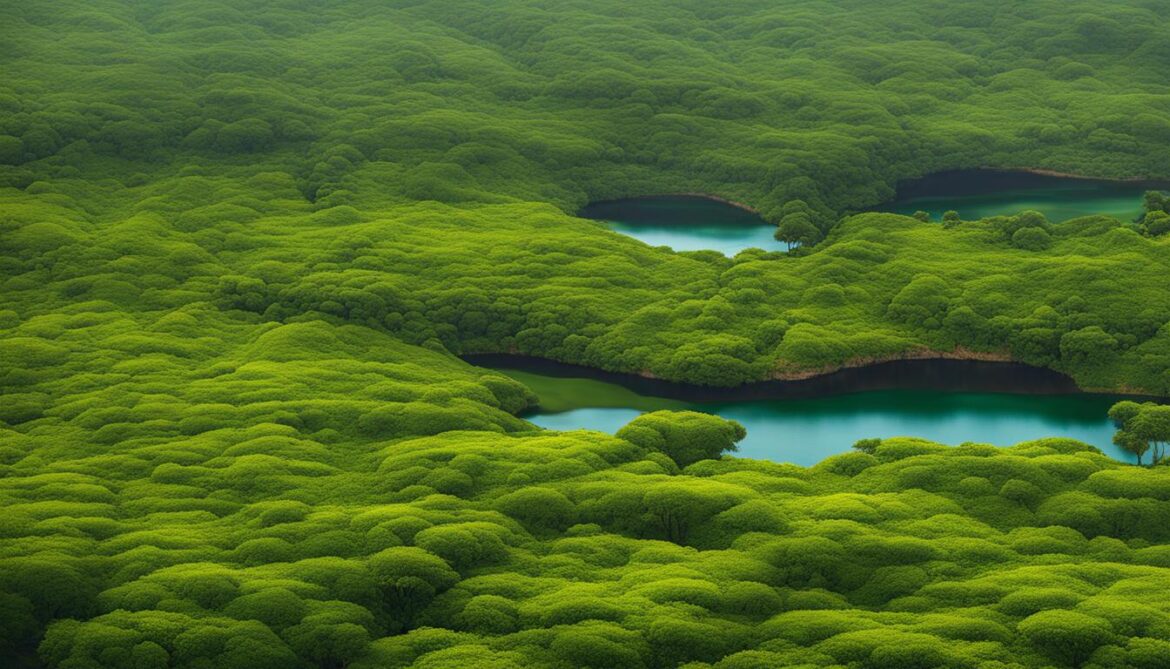
The image above represents the dedication and efforts put into Angola’s conservation initiatives, ensuring the preservation of its unique wildlife and natural landscapes.
Importance of Sacred Natural Sites
Sacred natural sites are invaluable for the conservation of biodiversity in Angola. These sites, deeply intertwined with cultural practices and beliefs, hold significant importance in safeguarding the country’s diverse ecosystems and species. Not only do they provide essential habitats for a wide range of plants and animals, but they also offer vital ecosystem services that contribute to the overall health and balance of Angola’s natural environment.
Angola’s sacred natural sites are cherished by local communities who recognize their cultural and spiritual significance. This intrinsic connection fosters a strong sense of responsibility among these communities, resulting in the preservation and protection of these sacred landmarks.
“The conservation of sacred natural sites is a testament to the harmonious relationship between human beings and nature. These sites represent a shared heritage and are a reflection of our deep reverence for the natural world.”
These sacred sites play a crucial role in maintaining and enhancing biodiversity. They often serve as refuges and breeding grounds for vulnerable species, acting as safe havens away from human disturbances and providing undisturbed habitats for their survival and reproduction.
Furthermore, sacred natural sites are known to support the sustainable use of natural resources. Local communities often practice traditional and indigenous knowledge in managing these sites, balancing human needs with the preservation of ecological integrity. This sustainable approach ensures the continuity of both cultural practices and the conservation of biodiversity.
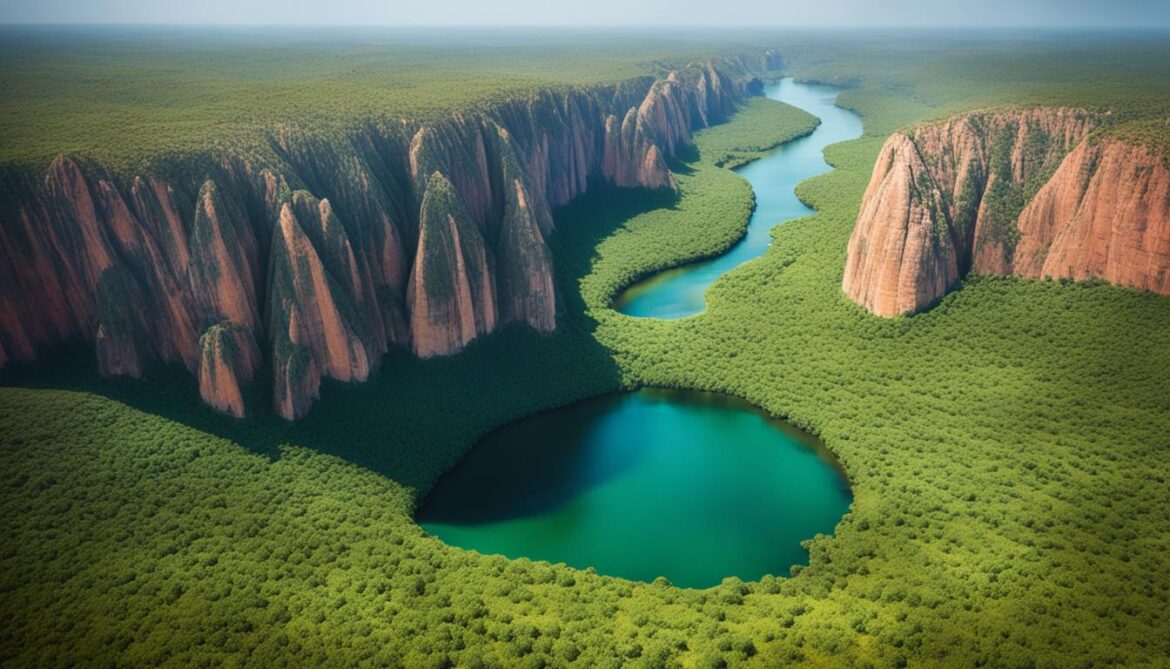
The Role of Sacred Natural Sites:
- Preserving delicate ecosystems
- Protecting endangered species
- Maintaining ecological balance
- Safeguarding traditional knowledge
- Contributing to sustainable resource management
Through the joint efforts of local communities, conservation organizations, and government authorities, Angola’s sacred natural sites continue to thrive as essential pillars of biodiversity conservation. Recognizing their value not only for culture but also for the intricate web of life, these sacred landmarks stand as a testament to the harmonious coexistence between humans and the natural world.
Policy and Legal Framework for Biodiversity Conservation
Angola recognizes the importance of biodiversity conservation and has established a comprehensive policy and legal framework to protect its natural heritage. The National Biodiversity Strategy and Action Plan (NBSAP) serves as a roadmap for the conservation of Angola’s unique ecosystems and wildlife.
The NBSAP identifies key sectors for knowledge and conservation and sets out specific objectives and action plans to be implemented. It addresses various aspects of biodiversity management, including habitat protection, species conservation, and sustainable resource use.
However, the successful implementation of the NBSAP has encountered challenges, including limited funding and technical resources. To achieve the 2020 Aichi Biodiversity Targets, it is crucial to secure additional support and resources for comprehensive implementation.
Despite the challenges, Angola remains committed to environmental protection and conservation efforts. The government is actively involved in international initiatives and agreements to collaborate with other nations and leverage resources for effective biodiversity conservation.
“Biodiversity is essential for sustainable development and the well-being of present and future generations.” – Angola Government Official
Through the policy and legal framework, Angola aims to create a conducive environment for stakeholder engagement and collaboration. This includes involving local communities, civil society organizations, and international partners in conservation initiatives.
Sustainable financing mechanisms and capacity-building programs are also being developed to enhance biodiversity conservation efforts. These initiatives aim to address the immediate threats to Angola’s wildlife and ecosystems while ensuring the long-term preservation of the country’s environmental heritage.
Strategic Objectives of the National Biodiversity Strategy and Action Plan:
- Implement measures to conserve and sustainably use Angola’s biodiversity.
- Promote the integration of biodiversity conservation into national development plans and policies.
- Enhance the capacity of institutions responsible for biodiversity management.
- Build public awareness and engagement in biodiversity conservation.
- Strengthen international cooperation and collaboration in biodiversity conservation.
| Challenges |
Solutions |
| Inadequate funding and technical resources |
Securing additional support and resources from international partners |
| Limited stakeholder engagement |
Promoting collaboration with local communities and civil society organizations |
| Insufficient capacity in biodiversity management |
Implementing capacity-building programs for institutions and personnel |
| Inadequate public awareness |
Developing educational programs and campaigns on biodiversity conservation |
| Fragmented approaches to conservation |
Improving coordination and integration of conservation efforts |

By prioritizing biodiversity conservation and aligning efforts with international agreements, Angola aims to protect its unique wildlife, ecosystems, and sacred natural sites for future generations to appreciate and enjoy.
Community-based Approaches to Conservation
Community-based approaches to conservation are key to preserving Angola’s natural heritage. By actively involving local communities in the management and protection of biodiversity, we can ensure the long-term sustainability of Angola’s unique ecosystems and wildlife. These approaches recognize the vital role that indigenous knowledge and practices play in conservation efforts, fostering a harmonious coexistence between humans and nature.
However, despite the benefits of community-based conservation, there are still gaps and constraints in the policy and institutional frameworks that support these initiatives. Additional support and improvement are necessary to empower local communities and enhance their involvement in conservation activities.
“Community-based conservation is not just about protecting wildlife; it’s about empowering communities and fostering a sense of ownership and responsibility towards the environment.”
To address these challenges and promote community-driven conservation, it is crucial to:
- Strengthen policy frameworks: Enhance existing policies and regulations to better support community-based conservation efforts. This includes providing legal recognition and protection for indigenous territories and traditional practices.
- Invest in capacity building: Provide training and resources to local communities, equipping them with the necessary skills and knowledge to actively participate in conservation activities and effectively manage their natural resources.
- Foster partnerships: Facilitate collaboration between local communities, NGOs, government agencies, and other stakeholders to leverage collective expertise and resources for effective conservation outcomes.
- Promote sustainable livelihoods: Develop alternative income-generating opportunities that align with conservation goals, ensuring that local communities can thrive while minimizing their impact on the environment.
By embracing community-based approaches to conservation, Angola can unlock the true potential of its biodiversity while empowering its people to become active stewards of the environment. Together, we can create a sustainable future where wildlife and communities can thrive in harmony.
Success Story: The Uukumwe Conservancy
In Namibe Province, Angola, the Uukumwe Conservancy stands as a shining example of the power of community-based conservation. Established in 2016, the conservancy is managed and governed by the local Mucubal community.
The Uukumwe Conservancy has implemented various sustainable practices to protect their natural resources, including:
- Implementing wildlife monitoring programs to ensure the conservation of key species.
- Engaging in sustainable livestock grazing management to prevent overgrazing and maintain a healthy ecosystem.
- Developing eco-tourism initiatives that provide economic benefits to the community while showcasing the beauty of their natural surroundings.
These efforts have not only led to significant improvements in biodiversity conservation but have also empowered the Mucubal community to take control of their future. The Uukumwe Conservancy serves as a model for other communities in Angola, demonstrating the positive impacts of community-based conservation.
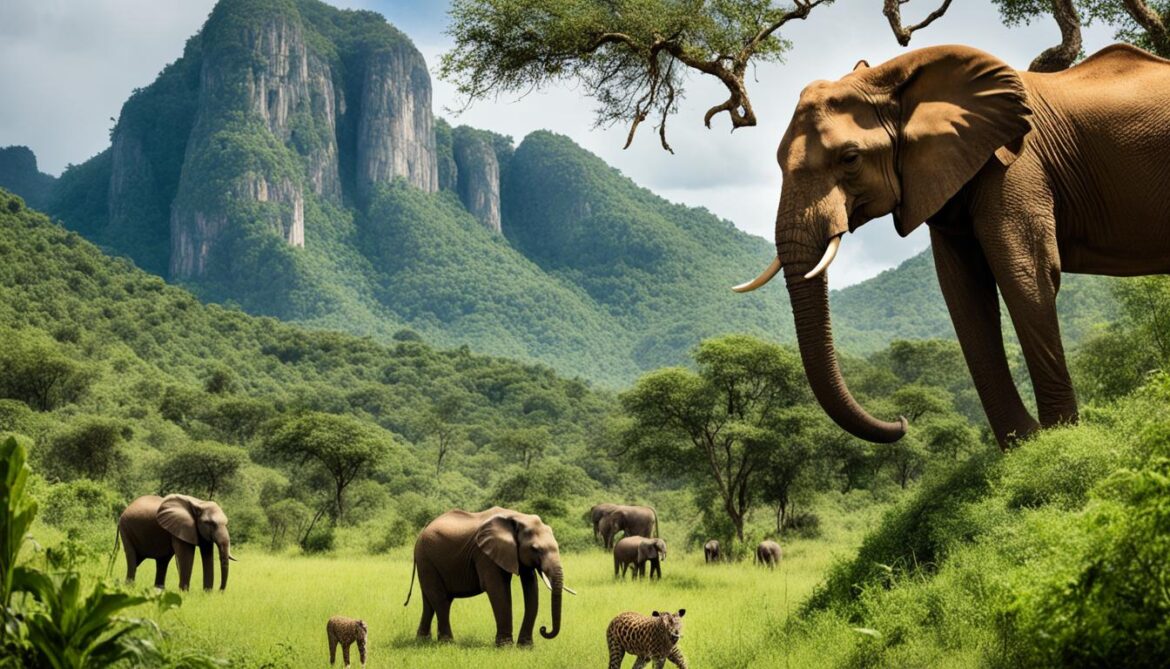
Ecoregion and Wildlife in Angola
Angola is home to the Greater African Subequatorial Savannas & Mixed Woodlands ecoregion, which covers central Angola and extends into the Democratic Republic of Congo. This ecoregion boasts a diverse range of habitats, including vibrant miombo woodlands and vast savannas. Within these habitats, Angola supports a wide variety of wildlife, making it a haven for biodiversity conservation.

Within the Greater African Subequatorial Savannas & Mixed Woodlands ecoregion, Angola is particularly known for its endemic species, such as the giant black sable antelope. This magnificent creature, with its striking ebony coat and long, spiraling horns, symbolizes the beauty and uniqueness of Angola’s wildlife.
“The protection of this ecoregion is of utmost importance to safeguard Angola’s rich biodiversity and preserve its natural heritage for future generations.”
Preserving this ecoregion is crucial to the overall Angola Wildlife Preservation and Conservation efforts. By protecting the habitats and ecosystems within the Greater African Subequatorial Savannas & Mixed Woodlands ecoregion, we can ensure the Biodiversity in Angola thrives and continues to support the ecological balance of the region.
Threats and Conservation Efforts in the Ecoregion
The ecoregion in Angola faces various threats that endanger its unique wildlife and biodiversity. Poaching, habitat loss and degradation due to human activities, and ongoing conflicts pose significant challenges to conservation efforts in the region.
One of the major setbacks for wildlife preservation in the ecoregion is the civil war that took place in Angola. The war had a catastrophic impact on animal populations and severely disrupted conservation initiatives. The loss of habitat, along with the direct impact from the war, led to the decline of several species, pushing them closer to extinction.
Despite these challenges, ongoing conservation efforts are taking place in the ecoregion to protect and restore the delicate balance of the ecosystem. One significant initiative is the implementation of controlled breeding programs for endangered and threatened species. These programs aim to increase the population and genetic diversity of at-risk species, ensuring their long-term survival.
Another crucial step in conservation is the establishment of protected areas within the ecoregion. These areas serve as sanctuaries for wildlife and provide a safe haven for vulnerable species to thrive. Efforts are being made to rehabilitate and maintain the existing protected areas, enhancing their habitat quality and ensuring their long-term viability.
In addition to the current protected areas, identifying and designating new areas for protection is a priority in preserving the ecoregion’s biodiversity. This process involves conducting comprehensive research and mapping to identify key habitats and wildlife corridors that need immediate attention and conservation efforts.

The table below highlights the current threats faced by the ecoregion and the conservation efforts being undertaken:
| Threats |
Conservation Efforts |
| Poaching |
Increased patrolling and law enforcement to combat illegal wildlife trade |
| Habitat loss and degradation |
Rehabilitation and restoration of degraded habitats, along with sustainable land use practices |
| Ongoing conflicts |
Engagement with local communities and stakeholders to address conflicts and promote peaceful coexistence |
Protecting the ecoregion requires a collaborative effort involving government authorities, local communities, NGOs, and international organizations. By addressing the existing threats and implementing effective conservation strategies, Angola can ensure the long-term preservation of its wildlife, contributing to global environmental protection and biodiversity conservation.
Conclusion
Angola’s rich biodiversity and sacred natural sites hold immense cultural and ecological importance. However, these natural treasures face significant threats due to habitat loss, illegal activities, and human pressure. To protect and preserve Angola’s biodiversity, the country has taken crucial steps, such as the recovery of national parks and the establishment of protected areas.
Despite these efforts, further support and investment in conservation initiatives are essential for the long-term sustainability of Angola’s sacred natural sites and diverse wildlife. Intensifying conservation measures, implementing robust environmental protection policies, and promoting responsible ecotourism are crucial for the preservation of Angola’s natural heritage.
By prioritizing conservation and environmental protection, Angola can safeguard its unique ecosystems, promote wildlife preservation, and sustain the cultural significance of its sacred sites. It is imperative that all stakeholders, including governments, local communities, and international organizations, collaborate in the pursuit of Angola’s conservation goals, ensuring a vibrant and biodiverse future for the nation.
FAQ
What is Angola known for in terms of biodiversity?
Angola is known for its unique blend of sacred natural sites and vibrant biodiversity.
What is the current state of Angola’s biodiversity?
Angola is facing major challenges when it comes to the loss and degradation of habitats, with approximately 75% of animals and plants listed as vulnerable, endangered, or critically endangered.
What are the main threats to Angola’s biodiversity?
The major threats include the loss and degradation of habitats, illegal forestry activities, charcoal and firewood consumption, and the pressure on wetland areas.
What conservation efforts are being made in Angola?
The government is working on recovering national parks, establishing conservation areas, and implementing infrastructure renovations, resettling animals, and providing training to park managers and guards.
Why are sacred natural sites important for biodiversity conservation in Angola?
Sacred natural sites in Angola serve as crucial habitats for various species and provide essential ecosystem services. Additionally, the cultural significance of these sites contributes to their conservation as local communities have an inherent connection and responsibility towards safeguarding them.
What is the policy and legal framework for biodiversity conservation in Angola?
Angola has established the National Biodiversity Strategy and Action Plan (NBSAP) to support biodiversity conservation. This framework identifies key sectors for knowledge and conservation, sets objectives, and outlines actions to be implemented.
How do community-based approaches contribute to conservation in Angola?
Community-based approaches involve the participation of local communities in the management and protection of biodiversity, recognizing the importance of indigenous knowledge and practices. This involvement is crucial for long-term sustainability.
What is the ecoregion and wildlife in Angola?
Angola is home to the Greater African Subequatorial Savannas & Mixed Woodlands ecoregion, which supports a diverse range of wildlife, including endemic species such as the giant black sable antelope.
What are the threats and conservation efforts in the ecoregion?
The ecoregion faces threats such as poaching, habitat loss and degradation, and ongoing conflicts. Conservation efforts include controlled breeding programs and the establishment of protected areas.
What is the significance and importance of Angola’s sacred natural sites and biodiversity?
Angola’s unique blend of sacred natural sites and biodiversity is of great importance for both cultural and ecological reasons. Conservation efforts are being made, but further support and investment are needed for the long-term sustainability of these sites and biodiversity.
Source Links






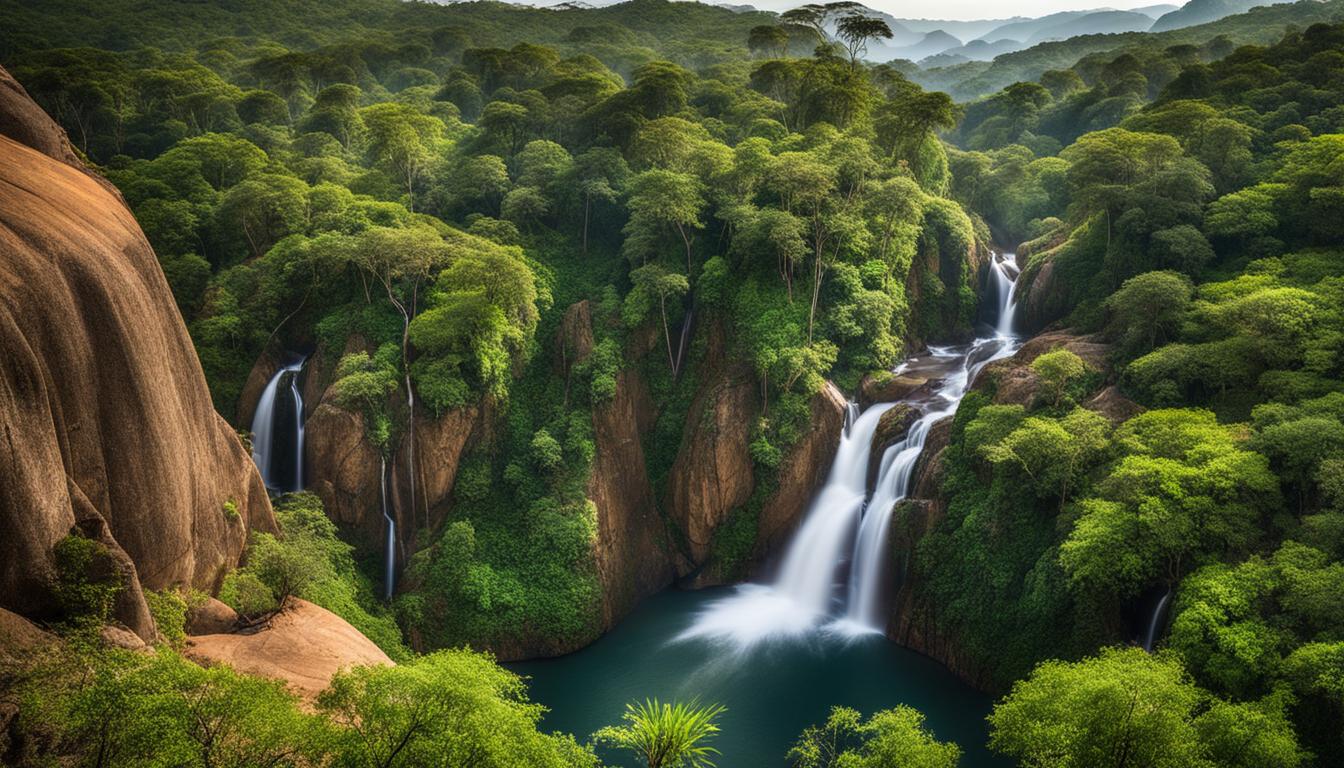


















Post comments (0)